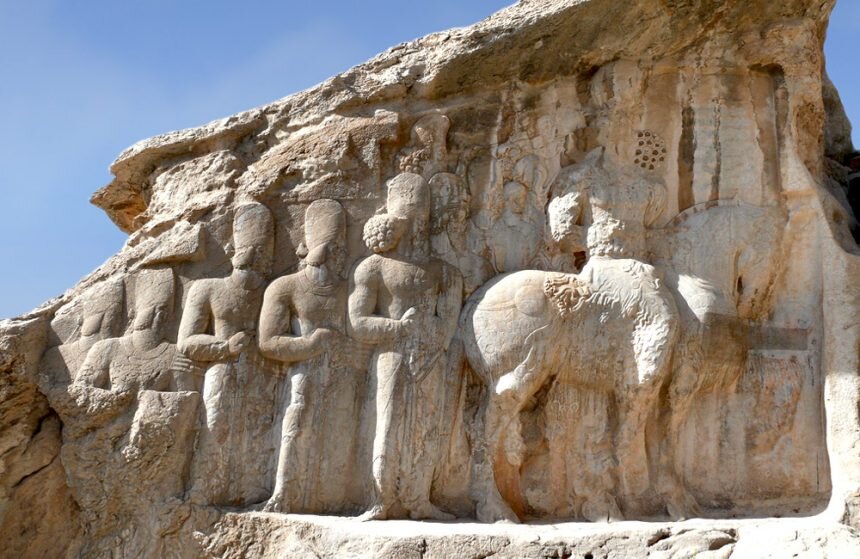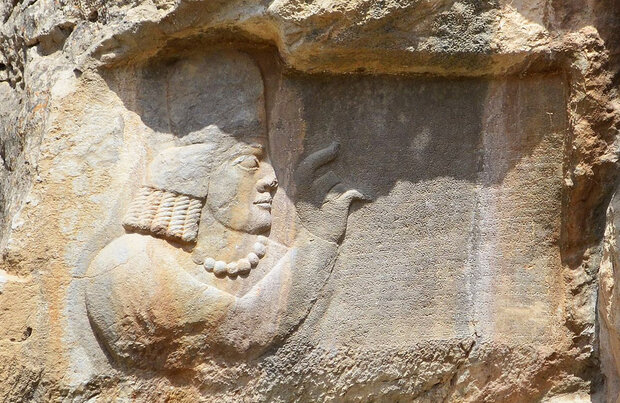Naqsh-e Rajab, reminiscent of a glorious past

TEHRAN - Adjacent to the old Shiraz–Isfahan Road and some three kilometers from Persepolis in a northward direction, you may find Naqsh-e Rajab that embraces magnificent Sassanian bas-relief carvings.
Naqsh-e Rajab, which depicts various scenes from the reigns of Ardashir I and Shapur the Great, was once located on a royal road constructed to facilitate communication between the royal capital of Persia, Susa, to Lydian, the capital of Sardis, in the 5th century BC.
Entering the site, your attention may soon be drawn to an equestrian investiture scene on the right, and the relief of Shapur surrounded by his generals on the left.

According to persepolis.info, on the latter relief, notice the different insignia on the hats of the generals, as well as the variety of cloth and chest buckles. They are arranged similarly to regimental numbers and ranks of military detachments.
On the chest of Shapur’s horse is a legible inscription relating his ancestry and hailing him as emperor of the Aryans.
The most important document on this site, however, is the carving of the high priest Karter, the Mobad-e-mobadan (priest of priests) under three Sassanian emperors: Shapur, Bahram I, and II.
His head can be seen just behind and above the pedestrian investiture scene, partially covered by branches of a green bush. He has a necklace, and his crooked finger is covered by an inscription of greatest importance. Here it is related to how he, as a high priest, has purified religion and cleansed the land of heresy (probably the Manichaeans) with fire and sword. He is the only non-royal person appearing in a carving.
The central relief shows a procession moving in the direction of a previous water source, which is now dried up. The center is occupied by the usual investiture scene, showing Ardeshir I receiving the wreath of power from the god. The crown prince stands beneath the wreath, a symbol used with each new line of succession.
There is also a pedestrian investiture scene of Shapur with an angel facing the ravine, possibly the source of water.
The Sassanid kings left too many rock carvings, most of them in the Fars region, to demonstrate their power and attribute rituals such as conquering their enemies and investing and commissioning the carving of rocks to commemorate the glory and high state of the Sassanids.

Evidence suggests that Sassanid kings sought to be related to the Achaemenid Empire, so most of the rock reliefs are seen in Fars, not too far from Persepolis, which served as the ceremonial capital of Achaemenid kings.
In 2018, UNESCO added “Sassanid Archaeological Landscape of Fars Region”, which is an ensemble of Sassanian historical cities in southern Iran, to its World Heritage list. The serial property is composed of eight selected archaeological site components in three geographical-area contexts at Firuzabad, Bishapur, and Sarvestan, all located in Fars province.
The components include fortification structures, palaces, reliefs and city remains, which date back to the earliest and latest moments of the Sassanid Empire that stretched across the region from 224 to 651 CE.
In many ways, Iran under Sassanian rule witnessed glorious achievements in Persian civilization. Experts say that during Sassanid times, the art and architecture of the nation experienced a general renaissance.
AM
Leave a Comment